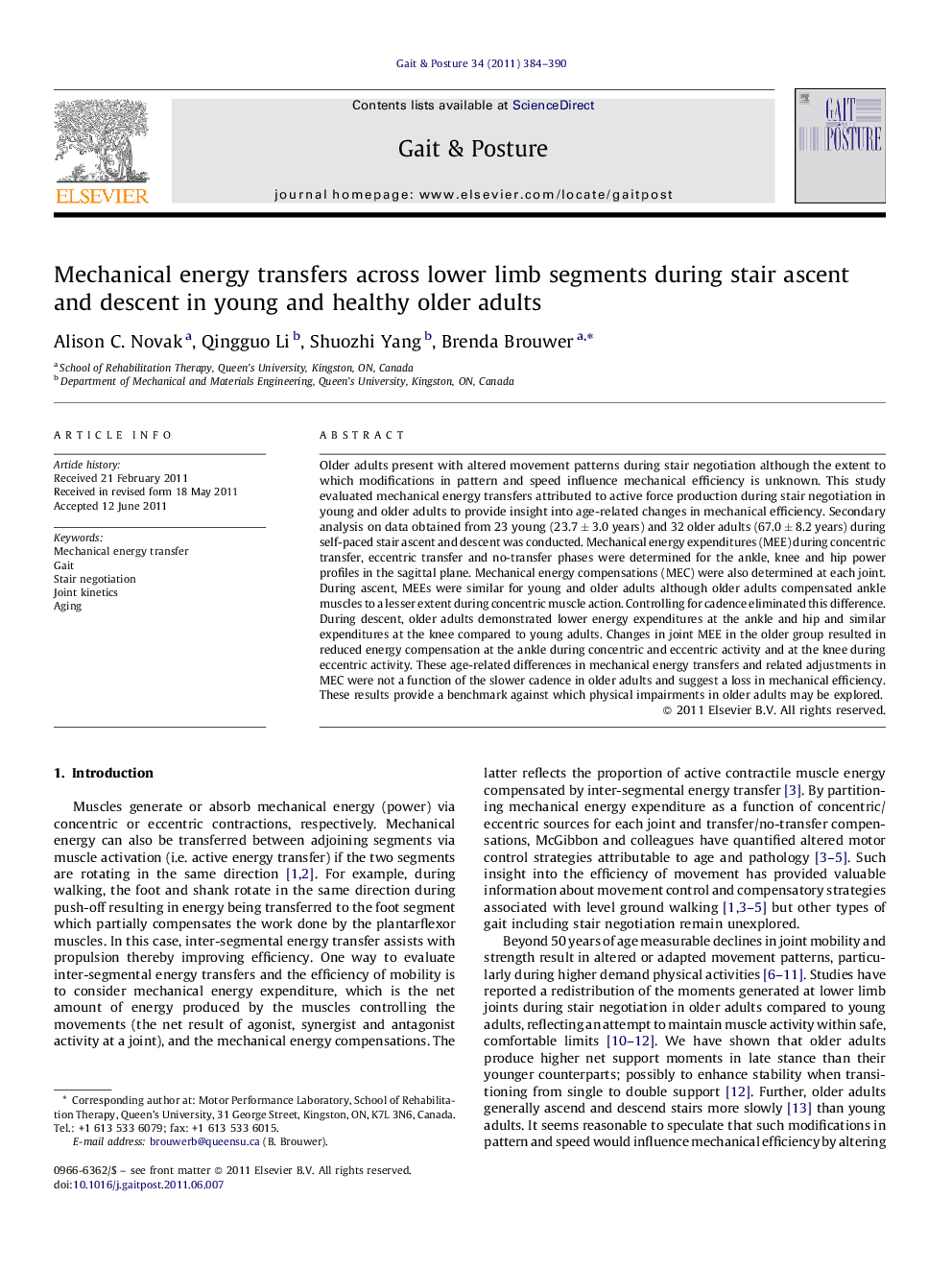| Article ID | Journal | Published Year | Pages | File Type |
|---|---|---|---|---|
| 6208180 | Gait & Posture | 2011 | 7 Pages |
Older adults present with altered movement patterns during stair negotiation although the extent to which modifications in pattern and speed influence mechanical efficiency is unknown. This study evaluated mechanical energy transfers attributed to active force production during stair negotiation in young and older adults to provide insight into age-related changes in mechanical efficiency. Secondary analysis on data obtained from 23 young (23.7 ± 3.0 years) and 32 older adults (67.0 ± 8.2 years) during self-paced stair ascent and descent was conducted. Mechanical energy expenditures (MEE) during concentric transfer, eccentric transfer and no-transfer phases were determined for the ankle, knee and hip power profiles in the sagittal plane. Mechanical energy compensations (MEC) were also determined at each joint. During ascent, MEEs were similar for young and older adults although older adults compensated ankle muscles to a lesser extent during concentric muscle action. Controlling for cadence eliminated this difference. During descent, older adults demonstrated lower energy expenditures at the ankle and hip and similar expenditures at the knee compared to young adults. Changes in joint MEE in the older group resulted in reduced energy compensation at the ankle during concentric and eccentric activity and at the knee during eccentric activity. These age-related differences in mechanical energy transfers and related adjustments in MEC were not a function of the slower cadence in older adults and suggest a loss in mechanical efficiency. These results provide a benchmark against which physical impairments in older adults may be explored.
